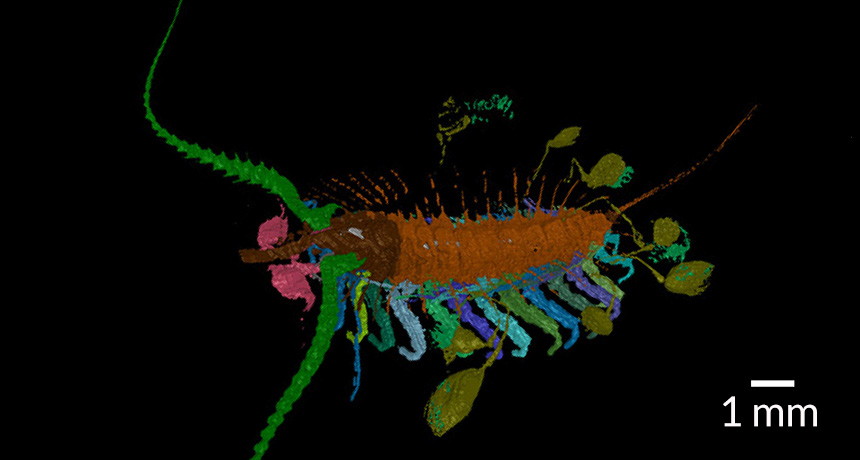Ancient arthropod kept its brood close
Threads tethered juveniles to parent, fossil suggests

KEEP CLOSE The ancient arthropod Aquilonifer spinosus tethered its offspring to its armor, shown in this 3-D rendering.
D. Briggs et al/PNAS 2016
Threads tethered juveniles to parent, fossil suggests

KEEP CLOSE The ancient arthropod Aquilonifer spinosus tethered its offspring to its armor, shown in this 3-D rendering.
D. Briggs et al/PNAS 2016